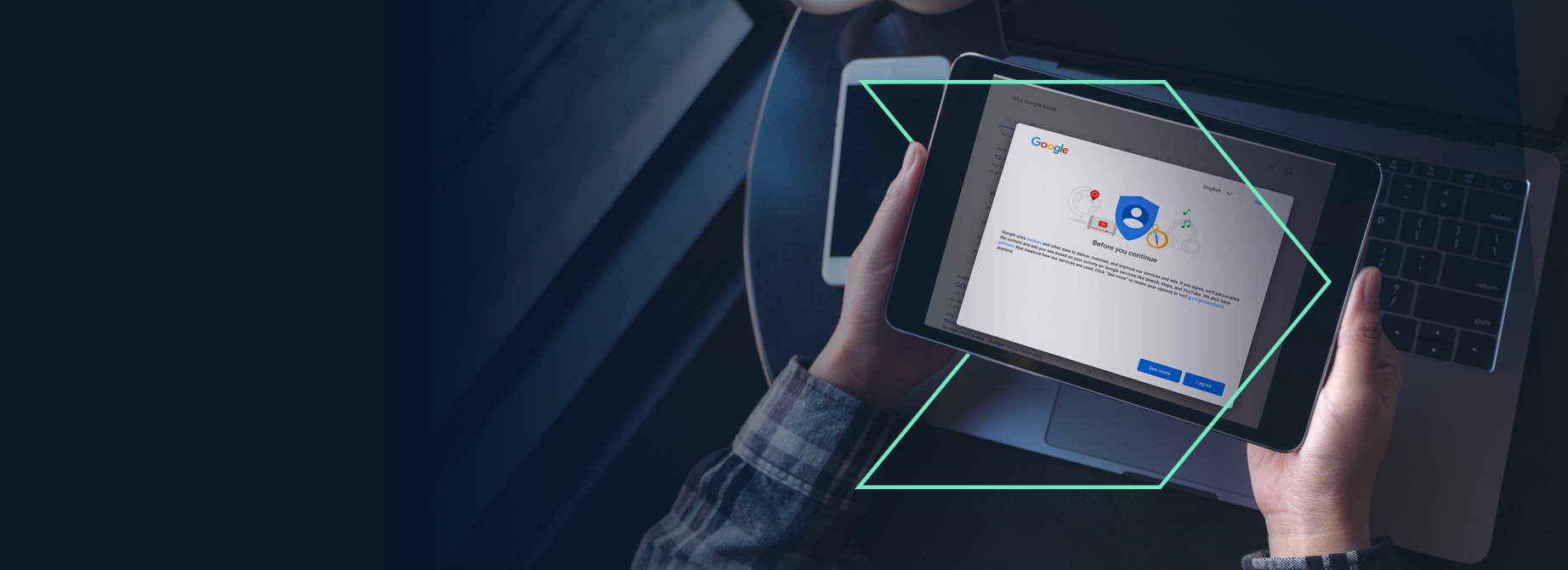3 min read

Google’s Cookie ban: the beginning of the end for personalisation?
Following Google’s recent announcement that it was ditching third-party cookies by 2023, the company has now made clear that it won’t be creating or using any alternative tools for the purposes of tracking individual users. In a blog on 3 March, Google’s Director of Product Management, Ads Privacy and Trust, David Temkin confirmed: “Today, we’re making explicit that once third-party cookies are phased out, we will not build alternate identifiers to track individuals as they browse across the web, nor will we use them in our products.”
So why is Google doing this? And what will it mean for marketers, who’ve grown to rely on tracking technologies to help them tailor and target their digital advertising? Is this the beginning of the end for personalisation?
Losing the trust of consumers
Temkin cites “erosion of trust” among users as the reason behind the decision. Using findings from Pew Research Center, he says “72% of people feel that almost all of what they do online is being tracked by advertisers, technology firms or other companies, and 81% say that the potential risks they face because of data collection outweigh the benefits”.
He says Google has been experimenting with tools that will allow advertising to continue to work on the web in a more “privacy-preserving” way, which, according to Business Insider, means APIs that prevent tracking on an individual level. They say Google also intends to preserve user privacy on websites by the likes of clustering them in interest-based groups.
To be fair, Google has pointed out that other adtech providers could continue to offer advertisers the tools to track individuals across the web – but as the biggest digital advertising company in the world, the impact of its decision to wipe out cookies is surely seismic.
Looking deeper into Google’s decision
Is there more to Google’s decision than meets the eye? MOI’s VP Media, North America, Whitney Powell says: “Data privacy is a serious issue and as we’ve seen in some of the high profile cases like Cambridge Analytica, it needs to be addressed. Google’s move aligns both with the shift on public sentiment around data protection and stringent data privacy laws”. But she also points out, “while Google may be limiting cookie reach for other players, rest assured they will be stitching and consolidating their user and profile data from their many data sources, from Gmail to YouTube to your mobile device to your search behaviour.
In his blog David Temkin certainly puts consumer interest at the heart of Google’s decision. He goes so far as to say “If digital advertising doesn’t evolve to address the growing concerns people have about their privacy and how their personal identity is being used, we risk the future of the free and open web,” and adds: “People shouldn’t have to accept being tracked across the web in order to get the benefits of relevant advertising. And advertisers don’t need to track individual consumers across the web to get the performance benefits of digital advertising.”
But Business Insider has been garnering the views and reactions of the adtech industry: “According to experts, the bottom line is, Google’s move will likely make its already massive ad business more powerful, and brands will need to prioritize collecting information directly from people, such as email addresses and shopping data.”
Google’s plans could be a threat to the adtech industry’s current efforts to create cookieless “universal identifiers” that use more privacy-conscious methods of user tracking, such as encrypted email addresses or login information. They’re concerned at the lack of clarity on how much they’ll still have to rely on Google’s data, or mix in first-party and other types of data to help them keep targeting ads at large digital audiences.
Threat or opportunity?
All things considered, what are the implications for B2B marketers?
“Third party cookie data is anticipated to decline about 60% with the 2022 browser update” says Whitney Powell, “The market is testing different technologies like Unifed.ID.20 and FloC to get around the attrition, but there’s no clear cut solution. Brands and companies will need to get a better handle on their digital activation strategy as well as their customer data and profiles. How they segment their CRM and their first and second-party data will lead the way, but the change will require a fundamental shift in strategy and the way marketing operation platforms are used as a whole.”
In short, as Jesse Rosenschein, the vice president of digital and account strategy at Mediassociates says, “if a company doesn’t have a first-party data strategy, it should be developing one.”
Is this the beginning of the end of personalisation?
Not for Whitney: “It’s not the end of personalisation. It’s a shift in how marketers and brands are able to apply personalisation through the cookie and browser sessions. B2B companies will need to have an end-to-end solution to ensure they can provide a customer journey that touches all end-user points.”
So if, on first impressions, Google’s latest announcement seems like yet another blow for marketers, there’s actually a huge opportunity for those with a robust strategy. “Brands will able to exert more control and influence from exposure to conversion” says Whitney, “but they’ll need to ensure customer mapping, first-party data oversight and how that aligns back into their marketing operation platforms.”
Related content









